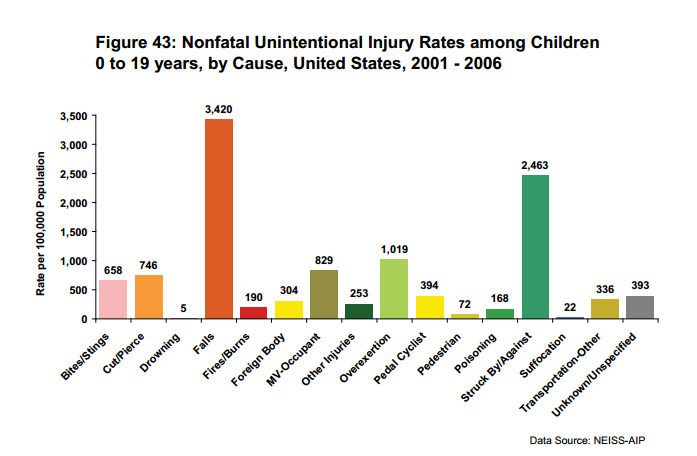Why Aren’t We Teaching Children How to Fall?
The facts are simple; Injuries due to falls are the leading cause of nonfatal injury amongst children in the U.S!
- Each year approximately 2.8 million children visit an emergency department for injuries from a fall.
- Playground falls cause more than 200,000 children, ages 14 and under, to require emergency room treatment.
- Children ages four and under tend to suffer injuries to the face and head from playground-related injuries, while older children are more likely to injure arms or hands.
We teach children how to catch a ball and how to throw it into a hoop, we teach them how to tie their shoelaces and how to cross the street but when it comes to falling the most we do is warn them not to fall when we see them running. Why aren’t we teaching them how to fall safely?
Perhaps it’s our natural tendency to avoid thinking that bad things might happen to us or those we care about? Or maybe we think it’s a natural instinct children have? But the truth is falling, like many other instincts, is a learnt skill. This is well known to Judo and other ground oriented martial arts practitioners but hasn’t spread throughout the general population. Hopefully this article can change this a little.
When I tell people I teach children Self Defense they usually ask about punches and strikes but the first thing I actually teach children is how to fall. It is probably the most useful physical skill I’ve learnt and has saved me from countless injuries.
The basic exercise is very simple and can be practiced anytime and anywhere. The basic idea is to practice lowering your center of gravity so the fall will be from a much lower distance while keeping the body soft so the impact spreads throughout the body minimizing the damage.
The game is called Ice cream falls! Tell the children to imagine they are like ice cream melting slowly in the heat and melt down to the ground. To prevent them from putting their wrists on the ground first have them stand up with their hands high above their head. Make sure their hips melts first bringing them close to the ground.
If you do not have mattresses you can still do this exercise just make sure to do it very very slowly.
If you have a group of children you can play Up & Down. The children walk around the room. When they see someone’s back they can brush it and that someone has to melt down like Ice cream but then the brusher has to help the child on the ground stand back up by offering him their hand (make sure the children keep their back’s straight when helping their friends back up).
The next step is to do the same but tell the children to tuck the chin in towards their neck. This helps prevent neck and head injuries.
The third step is practicing falling forwards. For this you must have mattresses! Children start out on their knees. They practice falling forwards and letting their whole arm hit the ground not their wrist! Their head should be looking sideways and their chin tucked down. This will spread out the impact and prevent wrist and arm injury as well as preventing the head from reaching the ground. As we can see from the statistics making sure children use their whole arm is very important for older children who do have the instinct to reach forwards when they fall but only use their hand and not their entire arm to break their fall.
By practicing these three simple exercises so many injuries can be prevented or lessened. So please share this information with family and friends!
If you find this information useful please consider a donation or help with the crowd funding project for the next book by clicking here

